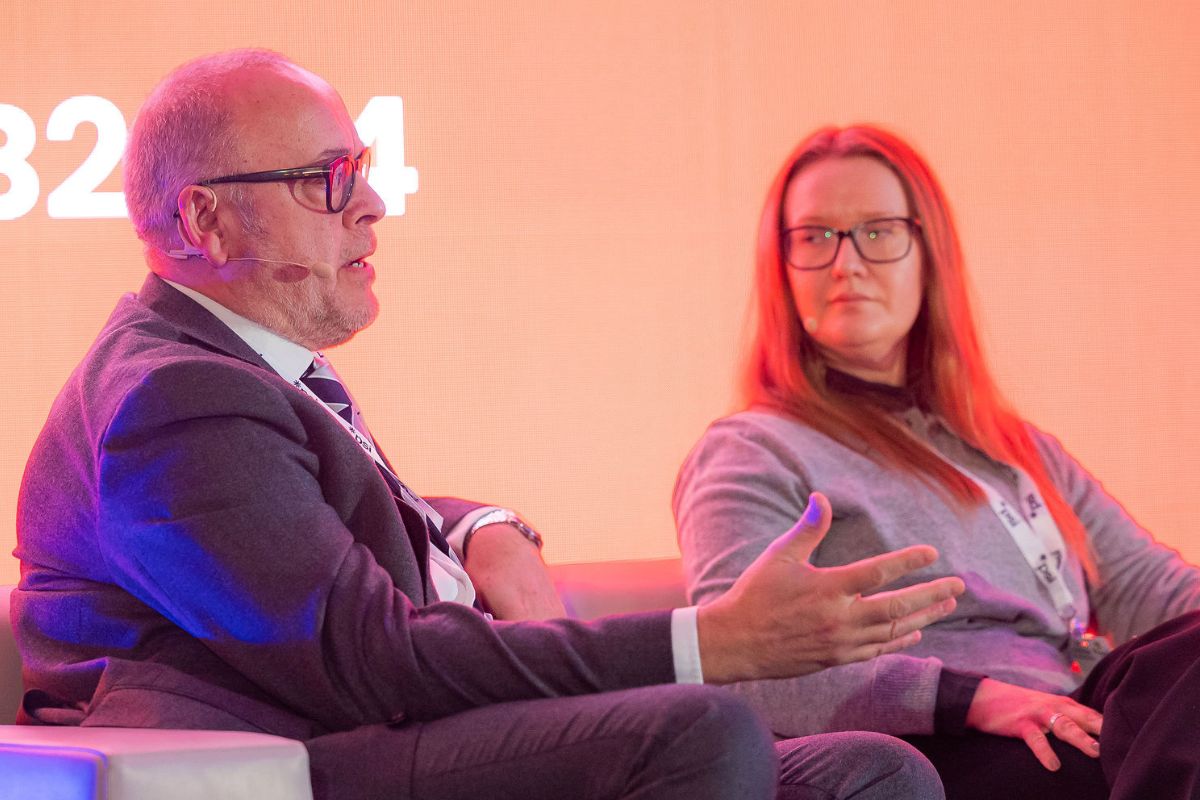Damian Hinds’ speech at the Schools and Academies Show 2019

Education Secretary Damian Hinds launches the EdTech Strategy and sets out his vision to transform the role of technology in education:
Thank you Tom for that warm welcome. Good morning everyone. It’s great to be here with you today, whichever part of the education spectrum you hail from.
I want to start by talking about the diversity of schools in this country, which is one of our education system’s greatest strengths – whether we talk about academies, free schools, LA-maintained schools, faith schools, grammars, 11-16, 11-18, all manner of schools – all make an invaluable contribution to their communities and to young people.
In everything we’ve been doing to improve education, we have put a strong focus on handing power back to schools, back to school leaders like yourselves, recognising that you are the ones best placed to make the right decisions for those pupils and those communities.
I trust you to get on with the job and I know the last thing you need is me or indeed anyone else, getting in your way.
I know many of you here – and the clue is in the name – are from academies, where autonomy is at the heart of what you do. This model is delivering consistently high standards and I want to congratulate all of you here who are helping to make it such a success.
I firmly believe that becoming an academy can bring enormous benefits to schools and their pupils.
And that’s often about coming together as a trust. Multi-Academy Trusts are powerful vehicles for improving schools – by sharing expertise, working collaboratively, driving improvements. This is something we want to see more of, because it repeatedly shows that it can improve outcomes for pupils.
Take the WISE Academies in the North East, which has taken on nine sponsored academies since 2012, all of which had serious performance concerns. Since then every single school inspected has been judged as good or outstanding by Ofsted.
Recently we passed an important milestone: a majority of children in state-funded schools in England are now taught in an academy or free school – and standards are rising faster in many sponsored academies than in similar council-run schools.
At the end of 2017, 1 in 10 sponsored academy schools were judged good or outstanding before they converted, compared to almost 7 in 10 after they became an academy. These results really are worth celebrating and go to show the great power of collaboration between schools.
But there are some areas, particularly where schools are trying to get the most for their money, where collaboration is best done at national level.
Now I do know it’s really challenging to balance your books, especially when costs are going up.
Advertising for new staff is a near-constant task for many heads and administrators. It also gobbles up chunks of precious budgets that could be better spent elsewhere. So we have launched a new service to give schools practical support with recruitment and ease some of the financial burdens that come with recruiting new staff.
All state schools in England can now access a free job-listing service called Teaching Vacancies. I encourage you, if you are not already doing so, to use it.
PriceWaterhouseCoopers estimate that the school sector could save around £75m per year on teacher recruitment, which could be better invested in the classroom.
I urge you to go and visit the team at the DfE stand where they’ll get you up to speed to use this service and begin saving money right away.
We also have a range of deals, advice and support that can help reduce some of your cost pressures and free up resources to reinvest back into the classroom, from energy and water to IT and photocopying.
We are currently piloting Complete Curriculum Programmes, whole packages of resources which will deliver a subject across an entire key stage.
These are intended to not only make sure children are learning what they need to but also to reduce teaching workloads and save schools money. We are exploring how we can share these more widely across the sector, giving more teachers a framework from which to support the planning and delivery of lessons, saving hours across a week for teachers and leaders.
And we need to have an informed marketplace where people can buy with confidence and that also makes it more effective and more efficient for sellers to market their wares.
Now one area where schools can seek to achieve better value for money is through educational technology. Or EdTech. And I want to focus my remaining remarks particularly on this.
Technology can be one of the single most important elements in the educational arsenal. It can act as a catalyst for those who learn and those who teach, transforming the experiences of both.
But – and there’s always a ‘but’ – EdTech also presents the education sector with unique challenges. In fact I’d say that education is one of the few areas where technology has as often been linked with an increase in workload, not a decrease.
What I sometimes hear from teachers is that far from tools that are hard to imagine living without, they have a ‘cupboard of shame’, full of all the tech kit that seemed such a good idea at the time but which in reality has hardly been used.
To deal with this unintended consequence, and others like it, we need schools and leaders to be able to understand more clearly, the benefits that specific technology tools can offer them, but we also need those developers and programmers to come up with more precisely engineered solutions for our sector.
Take behaviour management for example. This is an issue for schools across the board of course. We have heard plenty of anecdotes where one member of staff ends up going from classroom to classroom, collecting information about detentions, before inputting them into a central database and finally sending emails or texts to parents.
If you multiply that across the term you could be looking at about 500 hours every school year. Yet there are tech solutions which can allow teachers in class to mark detentions instantly into an automated system which does all of that. And then those 500 hours become negligible.
Other sectors have made enormous strides in how technology is used to make step changes in efficiency and the services they provide.
I don’t want our sector to be left behind and we owe it to all our young people to grasp that technology nettle.
So today I am announcing the launch of our new strategy for education technology called “Realising the potential of technology in Education”. This will set the direction we need to take to make the most of the digital revolution.This is not about tech for tech’s sake and it is definitely not about issuing diktats to schools about what they should be using and how and when they should be using it.
Instead, it marks the start of an important conversation about the place for technology in education. I want our world class education sector to be at the forefront of this conversation – and to be shaping how innovation can help schools drive efficiencies, help drive down teacher workload and ultimately of course make the learning experience a better, more successful one, for all children and young people.
I’ll come on to how that conversation will develop in a minute but before that, I’d like to talk you through some of the strategy’s immediate developments.
I am bringing together a group of leading education and technology experts to work collaboratively and inform our future direction about how we are going to use technology more effectively in schools and colleges. It will report back by the end of this year.
In addition, we will launch a network of demonstrator schools and colleges across the country. This is really important because it will give teachers the chance to see how others are using technology and how something works as it were in the flesh. It’s all very well being sold a package that looks as if it is the answer to your data-crunching dreams only to find that once you get it back to school it’s a total nightmare to run.
The demonstrator schools and colleges will also help staff and teachers learn how to embed and use the tools that could work for them within their broader vision and plans for their specific school. Not planning strategically in this way is often, I’m afraid, one of the main barriers to successful use of technology.
I want all teachers and school leaders to have the chance to develop and improve their skills and confidence when using technology. The new strategy will offer opportunities for further peer-to-peer learning. We have also created free online CPD [Continuing Professional Development] courses with the Chartered College, so more teachers and school leaders can increase their skills and confidence right across the sector.
I talked earlier about easing the financial burdens for schools and the EdTech strategy will help with this by offering access to different approaches to purchasing. For example by supporting a service run by the British Educational Suppliers Association called LendEd. This will enable schools to actually try before they buy, and share feedback on specific tech, with other schools.
Then, if you do go on to buy whatever product you’ve been testing, you have the reassurance of knowing that the companies involved have been vetted by the British Educational Suppliers Association.
It’s important that consumers and providers collaborate and this gets to the nub of what this strategy is all about. I am issuing 10 specific challenges that I want education experts and the technology industry to come together to solve. We have set aside a £10 million in order to help to drive it forward.
The challenges cover areas where there is potential for technology to make a real difference and where we need to galvanise activity, where we need greater innovation but where we also need to know whether or not technology will actually do what is needed. The challenges address administration, assessment, parental engagement, assistive technology, workforce flexibility, lifelong learning and the professional development of teachers.
And of course when technology works it can be truly transformative. Take City of London Academy in Southwark, where students with learning difficulties like dyslexia, use a computer for summative assessments. The computer uses software that can overcome difficulties with handwriting, reading and spelling which means students are able to type legibly, quickly and read text out loud. Text-to-speech lets them listen to questions and proofread their answers.
I can announce that we will launch competitions to promote innovation and collaboration, as well as test-bed schools and colleges to determine what is possible. These test beds will work together with industry, as well as other schools and colleges to help trial and of course assess the impact of new innovations.
We are working in partnership with Nesta, the global innovation foundation, on several of the challenges. This partnership will see both industry and government funding being used to support EdTech innovation in schools and colleges. These challenges relate to essay marking, formative assessment, parental engagement and timetabling technology.
Through this partnership we expect to share new insights about the way industry must develop products to meet the needs of teachers and students.
I am confident and excited that the changes we’ve announced today, are practical and going to have a material benefit for teachers, schools and for young people.
I hope you all get what you want from the show today, that you will see things to inspire you, to motivate you, that you find new ways of solving old problems. Most importantly, I hope that you use the occasion to share your knowledge and experience with others.
Thank you.
Damian Hinds, Education Secretary











Responses